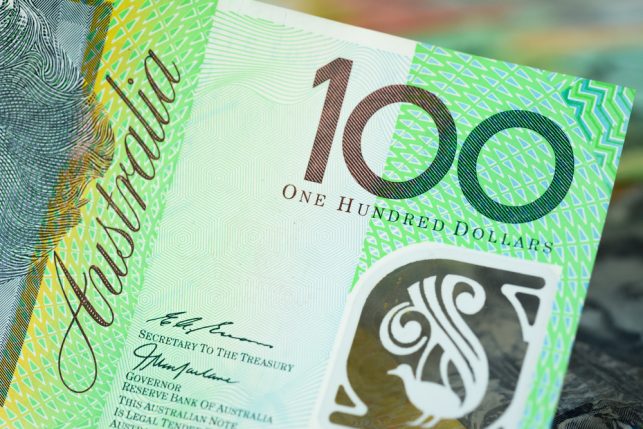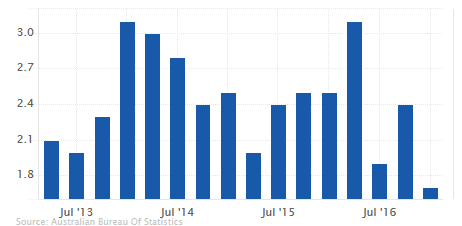 ?
?
Summary:
The first quarter gross domestic product (GDP) in Australia expanded 0.3% on a quarterly basis, according to data from the Australian Bureau of Statistics (ABS). On a year over year basis, the GDP expanded 1.7%.
 ?
?
Australia GDP (annual) growth 1.1%
The data marked a new record for the country which has managed to duck recession for nearly 25 years. Despite the bright, optimistic outlook, there were concerns among economists with the pace of growth slowing sharply in the three months ending March 2017.
The Q1 GDP data showed that the Australian economy expanded at the slowest pace since 2009.
In the previous quarter (Q4, 2016), the Australian economy expanded at a pace of 1.1%. Despite rising during the quarter, the Australian economy was seen contracting in the third quarter of 2016. Data showed that the economy contracted 0.5% during the quarter ending September 2016.
Contributing to the GDP growth was the fact that household consumption growth increased. This was remarkable given that wage growth remained negative. Public investment and net exports also helped to contribute to the GDP growth albeit at a slower pace of increase.
Household consumption rose 0.5% during the quarter and about 2.3% compared to the same period a year ago.
The increase in household consumption came with a reduction in the household savings ratio. This ratio fell to 4.7% in the March quarter, down from 5.1% from the previous quarter.
The compensation of employees was also seen rising 1.0%, posting a rebound during the quarter. This managed to reverse the declines of 0.7% from the previous quarter.
Despite the weak quarterly GDP growth, nominal GDP which measures the value of all finished goods and services increased 2.3%. This gain came due to an increase in the terms of trade which rose 6.6% in the reported quarter. Compared to a year ago, nominal GDP rose 7.7% and marked the fastest pace of increase in nearly six years.













Leave A Comment